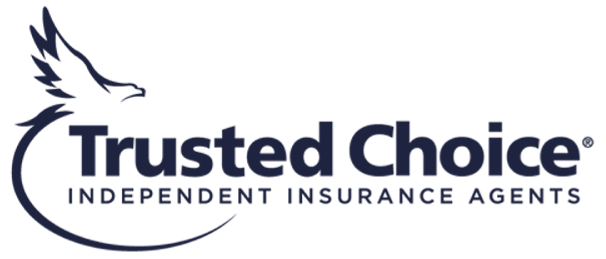
Life insurance can be an important part of your financial strategies, helping to ensure a more secure financial future for your loved ones when you're gone. Not only does life insurance help cover unexpected final expenses—it can also provide your family with a financial safety net or even serve as an inheritance.
Types of Life Insurance
Term Policy
Offers coverage for a specified amount of time.
Term insurance is typically the most basic and affordable form of life insurance. It is designed to provide pure death benefit protection for a stated period of time, usually between one - 30 years. Term insurance will only pay the death benefit if the client passes away during the term period. If the client is still alive when the level premium period ends and wants to keep the same coverage, premiums will usually increase significantly each year thereafter.1 Many term products may be convertible to permanent insurance without going through additional medical underwriting; however, the conversion periods and products available for conversion will vary by carrier. Term insurance lacks premium and death benefit flexibility and generally does not accumulate cash value.
In general, term insurance is well-suited for:
- Temporary protection needs (i.e., until children graduate college, to pay-off mortgage, etc.)
- Those who need a large amount of insurance at the lowest cost.
Permanent Policy
(Types of Permanent Coverages)
- Whole Life
Whole Life (WL) insurance provides permanent life insurance protection for the insured’s entire life. Its primary foundation is comprised of two guaranteed elements: Guaranteed Rates and Guaranteed Values. Whole Life is designed to endow at maturity, which means that when the policy matures, at age 100 or 121 or some other age, the guaranteed cash values will equal the guaranteed death benefit.
There are many different whole life product designs, which are usually distinguished by the amount of years it will take to pay-up the policy.
The most common designs are:
- Level Pay Whole Life (paid-up at maturity)
- 10 Pay Whole Life
- 20 Pay Whole Life
- Paid-up at Age 65 Whole Life
- Single Pay Whole Life Whole Life is generally well-suited for those who want reliable, predictable performance in their life insurance policy due to its guaranteed nature and are comfortable with it having the highest initial cost among life insurance products. Be aware that it is generally less flexible to premium payment changes than a typical universal life (UL) policy, particularly in early years.
- Universal Life
Universal Life (UL) insurance was introduced in the late 1970s as an alternative to Term and Whole Life (WL) and has gone on to become one of the most popular forms of life insurance in the market.* While Term is designed for temporary insurance needs, UL and WL are designed for permanent life insurance needs in individual or survivorship situations. UL differs from WL by being designed for premium payment and death benefit flexibility while having a transparent charge structure which breaks out the charges, loads, fees, etc. in the contract.
Going a little deeper into UL’s flexibility, UL policies generally allow policyholders to:
- Set the initial premium (within product limits), such as paying a modest premium for life, an ongoing higher premium with the goal of ceasing payments after a number of years, or paying a large lump sum
- Increase or decrease the premium as circumstances change
- Make lump sum payments
- Adjust the death benefit depending on the design of the individual product, UL has the potential for non-guaranteed, tax-advantaged cash value build-up. The cash value growth in UL is determined by the premiums paid, the interest rate credited, and the policy charges that are deducted. The cash values can be accessed via policy loans or withdrawals, or used for other purposes as well, such as exchanging the policy for another policy via a 1035 exchange. Today’s UL products can be lumped into the following broad categories: No-Lapse Guarantee UL (GUL), Current Assumption UL (CAUL), Indexed UL (IUL), and Variable UL (VUL). No-Lapse Guarantee UL is designed primarily for lifetime death benefit guarantees. Current Assumption UL, Indexed UL, and Variable UL products run the gamut of those designed for low-cost, long-term (even lifetime) death benefit guarantees to cash accumulation vehicles designed to provide supplemental retirement income. When determining which type of UL to offer, it’s important to do a thorough analysis to identify the client’s specific needs and which products may be a good fit.
- Guaranteed Universal Life (GUP)
No-Lapse Guarantee Universal Life (GUL) insurance came into being in the 1990s and grew in popularity for a few reasons:
- Desire for lifetime death benefit guarantees that were less expensive than Whole Life (WL)
- Older Universal Life (UL) or WL policies that under-performed due to lower interest or dividend rates than were assumed, which could be 1035 exchanged into a GUL
- Flight to safety from the volatility of variable products GULs have a basic goal, which is to offer lifetime death benefit guarantees with little to no cash value. These guarantees are often flexible, allowing clients to “dial-a-guarantee” typically from ages 90-95 through maturity (age 121). When first introduced, GULs appeared to be a straightforward, simple product. Over time, however, they evolved to become much more complex than many realized.
GULs are well-suited for those wanting permanent life insurance with built-in guarantees, but who want those guarantees at a lower cost, in general, than Whole Life. Those who are not interested in accumulating cash value and plan on this being their final permanent policy may also be good candidates. Keep in mind that all guarantees are subject to the claims-paying ability of the issuing carrier.
- Variable Universal Life
Upside potential and downside risk Variable Universal Life (VUL) products are designed for death benefit protection as well as cash value growth potential/risk through a range of underlying investment options, called subaccounts. How does it work? Other Universal Life (UL) products will take a portion of the premium payments and invest them in the insurance company’s general account. This is not necessarily the case with VULs. The premiums, after various charges, loads, and fees are deducted, can be directly invested into subaccounts. Subaccount options usually range from fixed income and money market funds to equity-based funds (such as large-cap, small-cap, growth, value, etc.). The performance of the product is tied to the investment choices, which means VUL owners bear more risk in this insurance product than in others but can also enjoy greater rewards if the subaccounts perform positively. If the subaccounts decline, cash value can be lost and could result in the need for additional premiums to keep the policy in force. If the subaccounts grow, cash values will grow on a tax deferred basis which can allow for future flexibility. There are different types of VULs to meet different objectives, such as those with lifetime death benefit guarantees or those designed for supplemental retirement income.
- Indexed Universal Life
Upside potential, downside protection Indexed Universal Life (IUL) products came on the scene in 1997 and have rocketed in popularity in recent years. IULs may appear to have a lot of moving parts, which can be intimidating to some, but keep in mind that they share the same basic qualities of other UL products – they are permanent life insurance products designed with the potential for non-guaranteed, tax-advantaged cash value build-up based on the insurance company’s general account investment results. How does an IUL work? The way the policy’s interest is credited is where it differs from other ULs. IULs are tied to an external index, typically the S&P 500. The interest credited to the policy will be based on the performance of that index, subject to a cap, a floor, and a participation rate. For example, if an IUL has a 10% growth cap and the S&P 500 grows by 15% and it participates in the index 100%, 10% will be credited to the policy’s cash value. If the S&P 500 goes down -5% for the year and the policy has a 0% floor, 0% will be credited to the policy’s cash value.
Why Now?
Life insurance can assist in the many different stages throughout your life including:
- Starting your career
- Maintain coverage and lower rates regardless if you change jobs or lose employer coverage
- Protect co-signers or family from student debt should anything happen to you
- Ensure the people you love most are protected
- Growing Your family
- Provide income to handle expenses if something happens to you
- Assist in making sure your family can stay in your home
- Covers college expenses or pay off education debts
- Leave money for family that is free from federal income tax
- Raising children on your own
- Provide financial stability to help protect the life you envision for your children
- Covers educational costs and even college
- Better prepares those who will be counted on to help raise your children should
- Set the foundation for your financial plan and future protection
- Nearing retirement
- Protect co-signers, children or grandchildren from debt should anything happen to you
- Make sure your future is financially protected
- Cover unexpected long term care or final expenses
- Leave an inheritance behind
- Living in Retirement
- Assists in paying for final expenses such as estate administration and burial costs
- Provides emergency funds in which you can borrow or withdraw from a life insurance policy that carries cash value to provide funds when you need it
- Help replace retirement income for couples relying on social security or a pension
- Helps offset unexpected medical costs if you are diagnosed with a terminal illness
Call us today to have peace of mind for you and your family!
 Don
Wright Insurance Agency
Don
Wright Insurance Agency

 Don
Wright Insurance Agency
Don
Wright Insurance Agency



